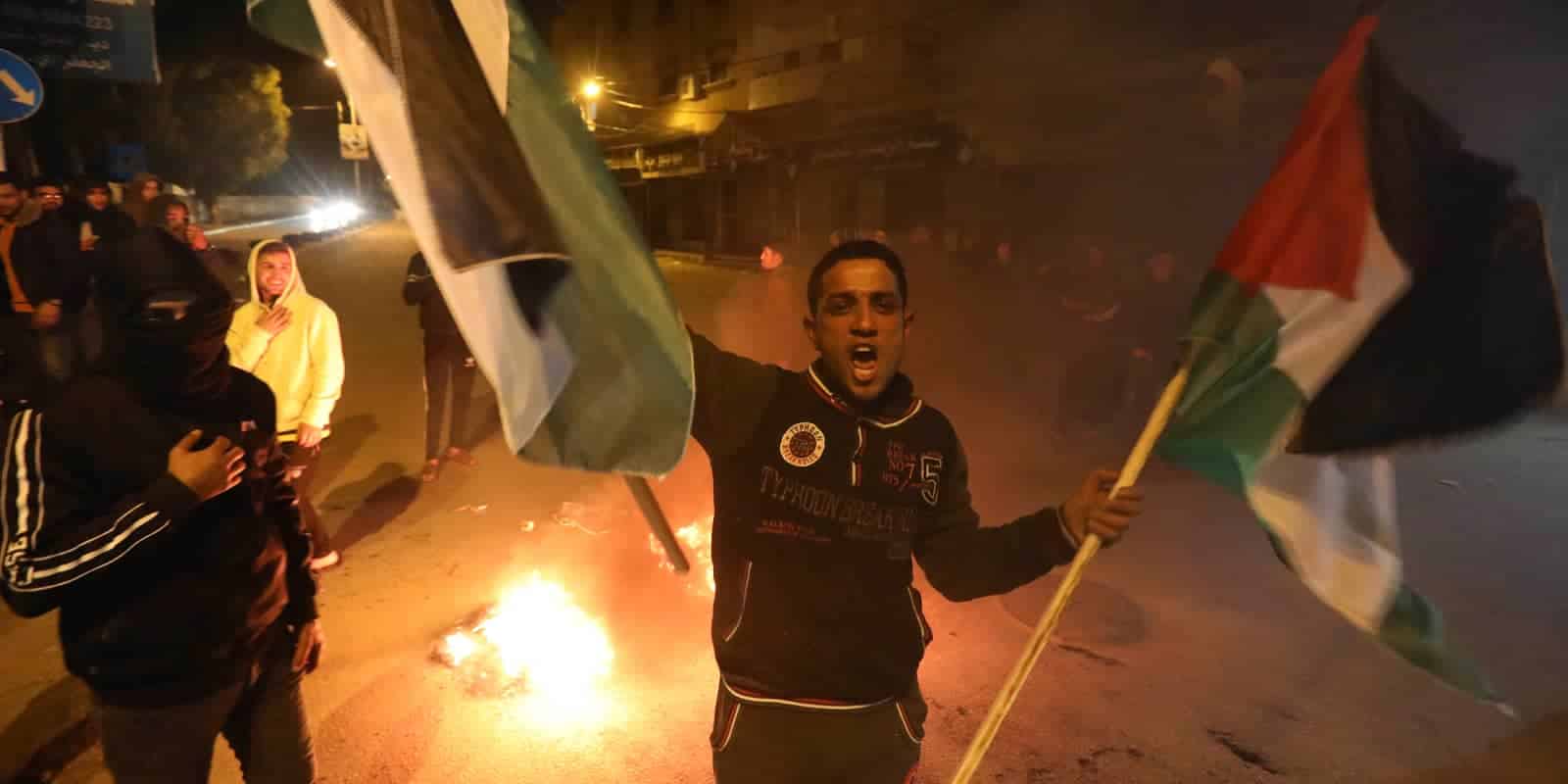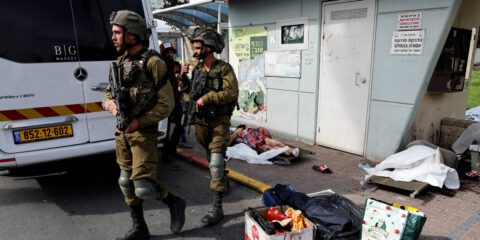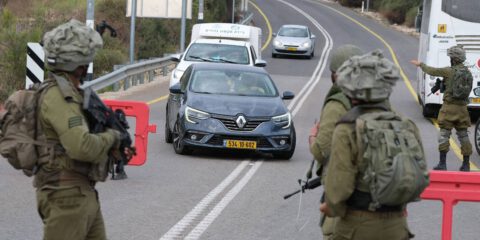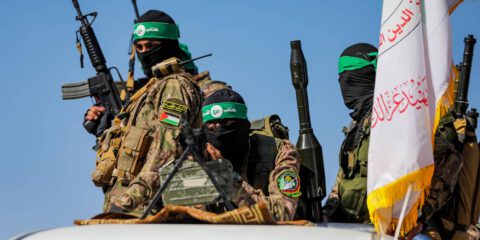גורמים ישראליים וכלי תקשורת מתריעים ללא הרף על הסכנות של הרמדאן הקרוב, מתוך הנחה שהפלסטינים אלימים יותר בתקופה זו. אבל, הנחה זו בעייתית ביותר כאשר מנתחים את הנתונים על האלימות הפלסטינית במהלך הרמדאן בהשוואה לשאר ימות השנה
זה הפך להיות דבר שבשגרה. גורמים רשמיים, מומחים ועיתונאים מתריעים מפני הסכנות של הרמדאן הקרוב והאלימות הפלסטינית שחלילה תתרחש במהלכו, בייחוד לאחר המסע של חמאס נגד ישראל במאי 2021, ועוד יותר מאז בחירת ממשלת הימין בישראל.
קריאה של הנתונים על פיגועים אינה מאששת השערה זאת.
הבה ניקח את השנה האלימה ביותר של אלימות פלסטינית בעשור האחרון, שנת 2015, בעיקר במהלך החודשים אוקטובר עד דצמבר, שבהם התרחש גל האלימות המשמעותי והקיצוני ביותר בירושלים, יהודה ושומרון ובמקומות אחרים. גל אלימות זה פרץ שלושה חודשים אחרי הרמדאן, וכשזה החל הוא התרחב מאוד.
בשירות הביטחון הכללי נרשמו 620 פיגועים בחודש אוקטובר בלבד, שהותירו אחריהם 11 ישראלים הרוגים. לעומת זאת במהלך יולי ואוגוסט, החודשים שחפפו לרמדאן, היו 123 ו-107 פיגועים, בהתאמה, ושני ישראלים נהרגו. החודשים החופפים לרמדאן היו גם פחות אלימים מאשר בהמשך הגל במהלך החודשים נובמבר ודצמבר, שבהם נרצחו 12 ישראלים.
את אותו הדבר אפשר לומר, אם כי באופן בולט פחות, על שנת 2016, שנת שיא נוספת של אלימות נגד ישראלים. גל האלימות דאז, שהחל בשנה שלפני כן, נמשך במהלך ארבעת החודשים הראשונים של שנת 2016, ואף אחד מחודשים אלה לא כלל את הרמדאן, שחל בין ה-7 ביוני ל-5 ביולי (המחזור המוסלמי הוא ירחי, ולכן חל בזמנים שונים בלוח השנה היוליאני, שהמערב נוהג לפיו).
הניגודים בין חודש ינואר, שיא האלימות, לחודש יוני (שחפף ברוב הזמן לרמדאן דאז) היו בולטים הרבה פחות מאשר בשנת 2015. כך, חמישה ישראלים נהרגו ב-169 פיגועים בחודש ינואר בשנה 2016, לעומת חמישה ישראלים בחודש יוני באותה שנה, כאשר אירעו 103 פיגועים. חשוב לציין בהקשר זה כי ארבעה מתוך חמשת הישראלים שנהרגו בחודש יוני 2016 נהרגו בתקרית אלימה אחת.
אולי הקישור שנעשה בין האלימות לחודש הרמדאן הוא פרי של השנים האחרונות. ברם, ניתוח של הנתונים בשלוש השנים האחרונות, שנת 2020, שנת 2021 ושנת 2022, אינו מצביע על מתאם סטטיסטי מובהק.
הרמדאן החל בשנת 2020 ב-23 באפריל, והסתיים ב-22 במאי. באפריל היו 71 פיגועים ללא הרוגים. בחודש מאי, שחפף לרוב הרמדאן, היו 80 פיגועים והרוג אחד. באותה שנה, אוגוסט ודצמבר 2020 היו אלימים הרבה יותר: 120 פיגועים והרוג ישראלי אחד נרשמו במהלך חודש אוגוסט 2020 ו-98 פיגועים והרוג ישראלי אחד נרשמו במהלך חודש דצמבר של אותה שנה.
הנתונים של שנת 2021 משמעותיים מאוד. במהלך הרמדאן של שנת 2021 פתח חמאס במסע טילים אדיר נגד ישראל. מסע זה החל בתקיפות מכוונות של החמאס על ירושלים, לאחר שאולטימטום שניתן לישראל להרחיק את כל אנשי המשטרה והצבא שלה מאל-מסגִ’ד אל–חראם ומאל-חרם א-שריף ושייח ג’ראח לא נענה. אף על פי שהמתקפה לא הצליחה לשנות את המדיניות הישראלית, חמאס אכן הצליח לשכנע את הציבור הישראלי לגבי הקשר בין הרמדאן לבין האלימות הפלסטינית.
באופן מוזר, בעוד שהרשויות בישראל והרשתות החברתיות חיזקו את טענות חמאס בדבר מתאם (קורלציה) בין הרמדאן לבין האלימות הפלסטינית, ההתנהגות הפלסטינית בירושלים וביהודה ושומרון סימנה את ההפך מכך. המסע של חמאס, יש לציין, יצא לדרך ב-10 במאי 2021, יום אחד לפני סוף הרמדאן.
יחד עם זאת, אפריל ומאי בשנת 2021 לא היו החודשים האלימים ביותר בהשוואה לחודשים נובמבר ודצמבר 2021, אשר בהם לא חל חג אסלאמי או יהודי. אלימות ניכרת נרשמה בקרב ערביי ישראל, בעיקר בערים המעורבות לוד ועכו. בתוך כשבוע במהלך חודש מאי 2021, בעת מבצע “שומר החומות”, רצחו פורעים ערבים שלושה יהודים, פצעו יותר מ-600 יהודים, הציתו 10 בתי כנסת, ונרשמו נזקים ב-112 בתי מגורים של יהודים. אבל כל זה התרחש לאחר הרמדאן. בנוסף, האלימות של ערביי ישראל אינה עקבית כמו האלימות הפלסטינית בירושלים וביהודה ושומרון.
למעשה גל האלימות הזה מהווה חריג בעוצמתו, ורק גל האלימות בחודש אוקטובר 2001, הפתיחה של המתקפה המאסיבית של הרשות הפלסטינית 20 שנה קודם לכן, היה גדול ממנו.
רק במהלך שנת 2022 יש מתאם בין הרמדאן לבין שיא האלימות הפלסטינית, אבל גם אז הקשר שנרשם היה די חלש. חודש הרמדאן בשנת 2022 החל ב-12 באפריל 2022, כאשר החודש האלים ביותר, לפחות במונחים של מספר ההרוגים הישראליים שנרשם, היה במרץ 2022, עם 11 ישראלים שנהרגו בחמישה פיגועים קטלניים.
בחודש אפריל 2022 היו יותר פיגועים, 268 פיגועים, אבל הם היו פחות קטלניים. פיגועים אלה גרמו לארבעה הרוגים. אולי הדבר נובע מהגברת ההתגייסות הביטחונית הישראלית למאבק בהם.
חודשים דצמבר ונובמבר של אותה שנה, 2022, שלא נחוג בהם אף חג, גם הם היו אלימים מאוד: בחודש דצמבר נרשמו 401 פיגועים ושלושה הרוגים, ובחודש נובמבר נרשמו 254 פיגועים ושני הרוגים.
במשך מאה שנים לפחות, גופי הביטחון והחוקרים באקדמיה ניסו לחשוף את החוקים המסדירים אלימות המונית. ההשערה שרמדאן הוא חודש של אלימות בהקשר הפלסטיני היא בבחינת ניסיון כזה. אבל, כמו ניסיונות אחרים להסביר את החוקיות של האלימות הפלסטינית, התנהגותם בפועל של המחבלים מתגלה כמורכבת הרבה יותר.
אני מתפתה לומר כי גורמים רשמיים בישראל, הטוענים בטעות לקשר בין הרמדאן לאלימות פלסטינית והמזהירים מפני השלכותיו, עלולים להגשים במידה מסוימת את התחזיות שלהם.
על כן, הם צריכים לפעול, ולא לדבר.
סדרת הפרסומים “ניירות עמדה” מטעם המכון מתפרסמת הודות לנדיבותה של משפחת גרג רוסהנדלר
תמונה: IMAGO / APAimages / Ashraf Amra










 - בניית אתרים
- בניית אתרים